When it comes to electrical wiring, durability and safety are paramount considerations. Whether you’re planning to install or upgrade electrical systems in your home or working on a construction project, understanding the lifespan of wiring materials is essential.
In this blog post, we will delve into the topic of Romex cables and explore their lifespan when used underground. We will discuss the factors that influence their durability, the potential challenges they may face, and how you can ensure the longevity and safety of your electrical installations.
By gaining a deeper understanding of Romex’s performance underground, you’ll be better equipped to make informed decisions about your electrical wiring projects, whether you’re a homeowner, a contractor, or a DIY enthusiast.
So, let’s dig into the world of Romex cables and discover how long they can effectively withstand the rigors of underground installations.
The Basics of Romex: Understanding Non-Metallic Sheathed Cable
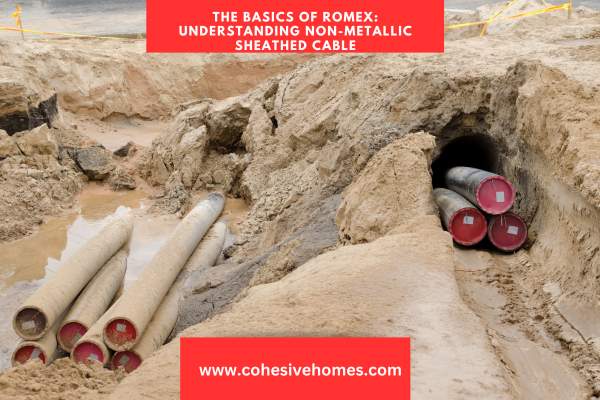
Romex, also known as non-metallic sheathed cable (NM cable), is a popular type of electrical wiring commonly used in residential and commercial applications.
It consists of two or more insulated conductors (wires) wrapped in a protective sheath made of PVC or thermoplastic material.
The sheath serves as insulation and protection for the conductors, providing resistance to moisture, heat, and physical damage.
The conductors within Romex cables are typically made of copper, a highly conductive metal that ensures efficient electrical flow.
The cables come in various sizes, referred to as gauges, to accommodate different electrical loads and applications.
Romex is known for its flexibility, ease of installation, and cost-effectiveness, making it a preferred choice for many electrical projects.
The Advantages and Applications of Romex Wiring

Romex wiring offers several advantages that make it a popular choice for both residential and commercial applications.
Firstly, its non-metallic sheathing provides excellent protection against moisture, reducing the risk of short circuits or electrical hazards.
Additionally, Romex is resistant to corrosion, making it suitable for use in damp environments or areas with high humidity levels.
Another advantage of Romex is its flexibility, allowing for easy installation in tight spaces or complex wiring configurations.
The outer sheathing also provides a degree of mechanical protection, safeguarding the conductors from accidental damage during installation or everyday use.
Romex is commonly used in various electrical applications, including wiring for outlets, lighting fixtures, switches, and appliances.
Its versatility and cost-effectiveness make it a go-to option for both residential and commercial electrical projects.
Factors Influencing the Lifespan of Romex Underground
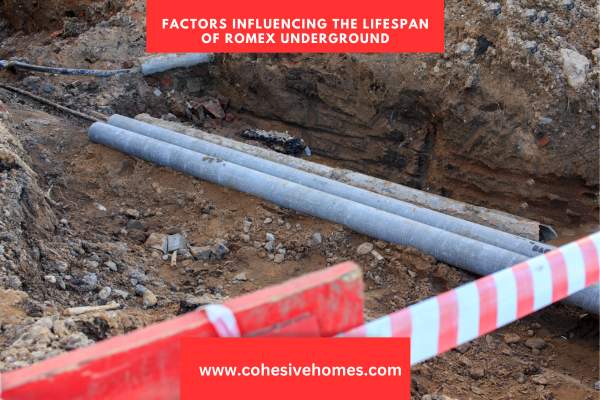
The lifespan of Romex cables when installed underground is influenced by several factors that can impact their durability and overall performance.
Understanding these factors is crucial for ensuring the longevity and safety of the electrical installation.
Moisture and water resistance play a significant role in determining the lifespan of Romex underground.
Water infiltration can lead to insulation degradation, corrosion of conductors, and an increased risk of electrical faults.
Proper moisture barriers and waterproofing measures should be implemented to protect the cables from prolonged exposure to moisture.
Temperature and climate considerations are also important.
Extreme heat or cold can affect the integrity of the cable’s insulation, potentially leading to insulation breakdown or cracking.
Moreover, exposure to direct sunlight can accelerate the degradation process.
Choosing Romex cables with insulation rated for the specific temperature range and environmental conditions can help mitigate these risks.
Soil composition and corrosion potential must be taken into account.
Certain soil types, such as highly acidic or alkaline soils, can corrode the cable’s metal components over time.
Conducting soil tests and using appropriate protective measures, such as conduit or proper burial techniques, can minimize corrosion risks.
Challenges and Risks of Underground Romex Installations
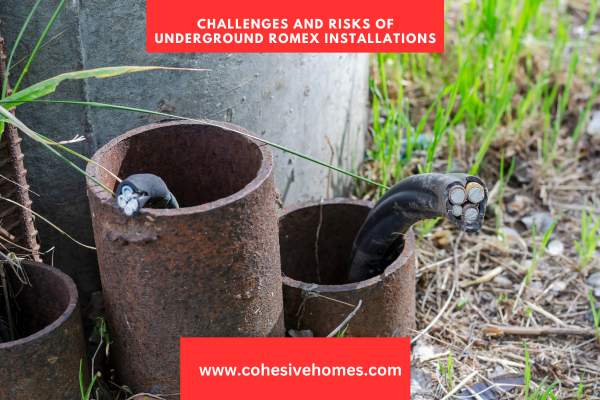
Underground Romex installations face unique challenges and risks that can impact their lifespan and safety.
It is essential to be aware of these factors when planning and executing underground electrical projects.
Mechanical damage and crushing pose a significant risk to Romex cables installed underground.
Heavy machinery, construction activities, or accidental digging can result in the cables being crushed or damaged.
This can compromise the insulation, leading to potential electrical faults or hazards. Proper cable protection methods, such as burying the cables at the appropriate depth and using conduit or protective casings, can minimize the risk of mechanical damage.
Rodent and pest infestations are another challenge for underground Romex installations.
Rats, mice, or other rodents may be attracted to the warmth of the cables and chew through the insulation, leading to exposed wires and potential electrical shorts.
Implementing rodent deterrent measures and regularly inspecting the installation can help identify and address any signs of pest damage.
Chemical interactions and contaminants in the soil can also impact the lifespan of Romex cables.
Certain chemicals, such as fertilizers, pesticides, or industrial pollutants, can corrode the cable’s components or degrade the insulation.
Conducting a thorough analysis of the soil composition and implementing proper protective measures can minimize the risk of chemical damage.
By being aware of these challenges and taking proactive measures, it is possible to mitigate the risks and ensure the longevity and safety of underground Romex installations.
Extending the Lifespan: Best Practices for Installing Romex Underground

To maximize the lifespan of Romex cables installed underground, it is crucial to adhere to best practices during installation.
Following these guidelines can help enhance the durability and safety of the electrical system.
Proper burial depth and protection are essential considerations.
Romex cables should be buried at a sufficient depth to prevent accidental damage from excavation or landscaping activities.
Consult local building codes or electrical regulations to determine the appropriate burial depth for your area.
Additionally, using conduit or direct burial cables designed for underground installations adds an extra layer of protection against mechanical damage and moisture infiltration.
Choosing the right conduit or direct burial cable is critical.
Conduits provide excellent protection for Romex cables and allow for easy replacement or upgrades in the future.
Opt for high-quality, corrosion-resistant conduits that are suitable for underground use.
Direct burial cables, on the other hand, are designed specifically for underground installations and eliminate the need for conduit. Ensure that the direct burial cable meets the necessary safety and performance standards.
Grounding and compliance with electrical codes are non-negotiable.
Proper grounding of the Romex cables is essential for safety and protection against electrical faults.
Follow local electrical codes and regulations to ensure compliance, and engage a licensed electrician if necessary.
Adhering to code requirements guarantees that the installation meets the necessary safety standards.
Maintenance and Inspection: Ensuring the Longevity of Underground Romex
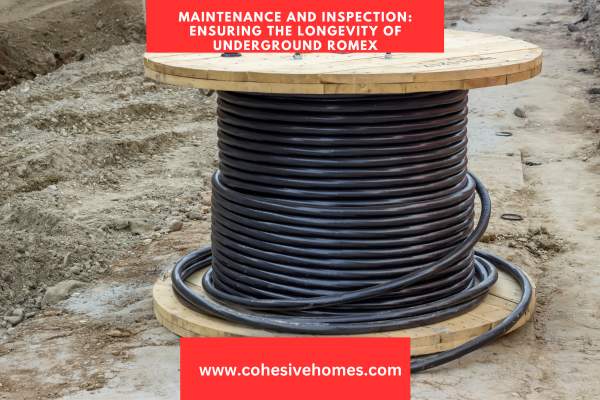
Regular maintenance and inspection play a crucial role in ensuring the longevity of underground Romex installations.
By implementing these practices, potential issues can be identified and addressed before they escalate into major problems.
Perform regular visual inspections of the underground electrical system. Look for signs of damage, such as exposed cables, cracked insulation, or signs of moisture.
Pay attention to any changes in the surrounding environment that may impact the cables, such as new construction or landscaping activities.
Promptly address any identified issues to prevent further damage or electrical hazards.
Moisture is one of the primary concerns for underground installations.
Regularly check for signs of moisture infiltration, such as dampness or water pooling around the cables.
If moisture is detected, take immediate action to identify the source and implement proper waterproofing measures.
This may involve applying sealants or installing additional moisture barriers.
Engaging the services of a professional electrician for periodic testing and maintenance is highly recommended.
They can conduct electrical tests to ensure the integrity of the system and identify any potential issues that may require attention.
Professional maintenance helps detect problems early on, ensuring the safety and reliability of the underground Romex installation.
By incorporating these maintenance and inspection practices, you can significantly extend the lifespan of underground Romex installations and maintain a safe electrical system for years to come.
Conclusion
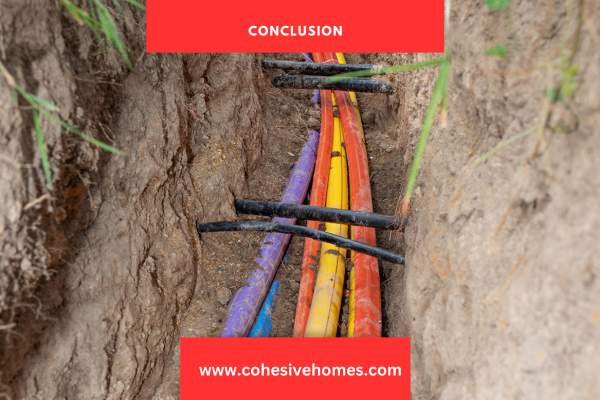
In conclusion, understanding the factors that influence the lifespan of Romex cables when installed underground is crucial for ensuring the durability and safety of electrical systems.
By following best practices during installation, conducting regular maintenance and inspections, and considering alternatives when necessary, you can maximize the lifespan of underground Romex installations.
Prioritizing the longevity and safety of your electrical system not only provides peace of mind but also ensures the efficient operation of your home or commercial space.
FAQS
How long do Romex cables last when installed underground?
The lifespan of Romex cables underground varies, but with proper installation and maintenance, they can last for several decades.
Are Romex cables suitable for all underground wiring applications?
Romex cables may not be suitable for every underground wiring scenario. Factors such as extreme conditions or specific requirements may necessitate alternative wiring methods or materials.
How often should I inspect and maintain underground Romex cables?
Regular inspections are crucial for underground Romex cables. The frequency of maintenance depends on factors like installation age and location-specific requirements. Consulting a professional electrician is recommended.
